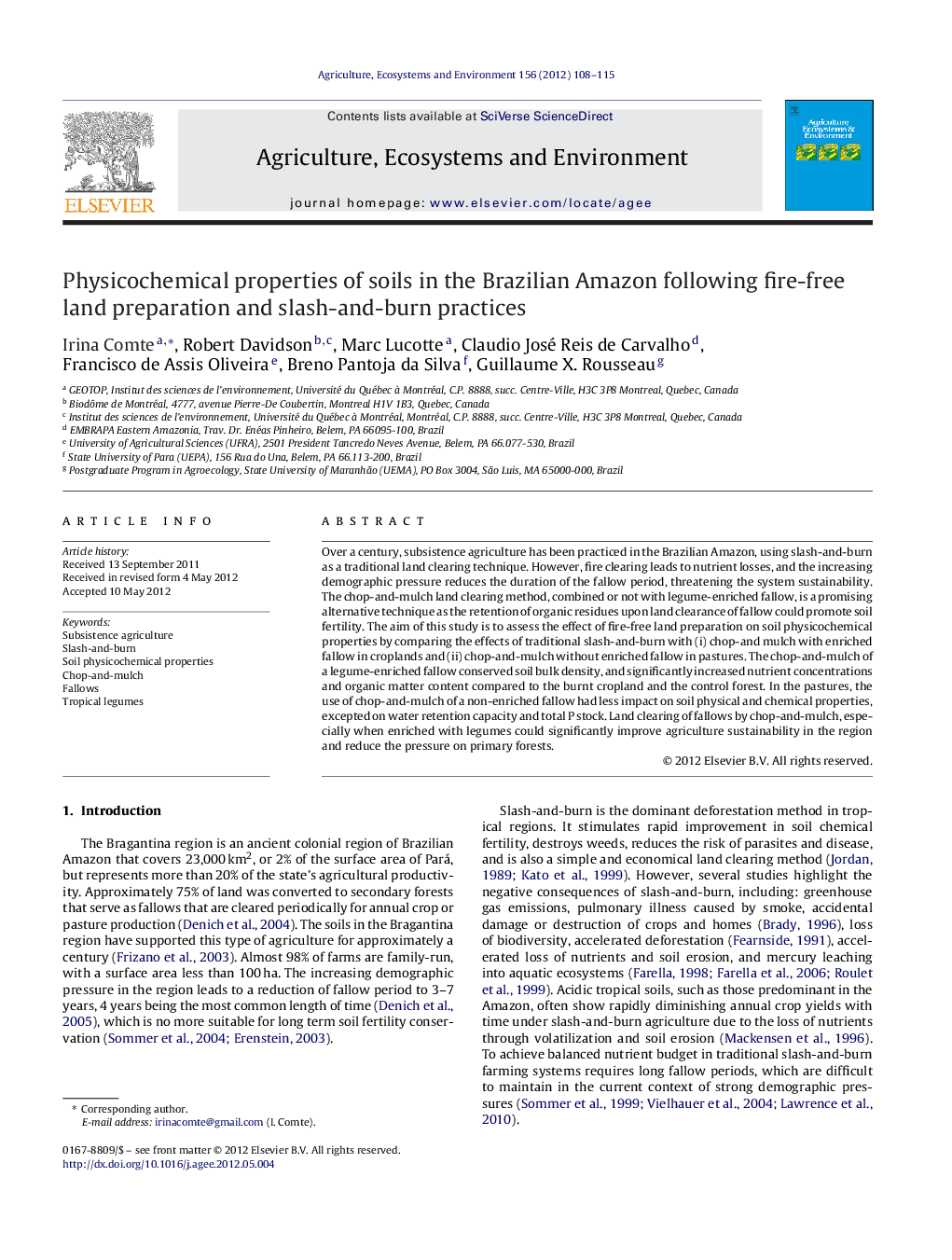| Article ID | Journal | Published Year | Pages | File Type |
|---|---|---|---|---|
| 2414478 | Agriculture, Ecosystems & Environment | 2012 | 8 Pages |
Over a century, subsistence agriculture has been practiced in the Brazilian Amazon, using slash-and-burn as a traditional land clearing technique. However, fire clearing leads to nutrient losses, and the increasing demographic pressure reduces the duration of the fallow period, threatening the system sustainability. The chop-and-mulch land clearing method, combined or not with legume-enriched fallow, is a promising alternative technique as the retention of organic residues upon land clearance of fallow could promote soil fertility. The aim of this study is to assess the effect of fire-free land preparation on soil physicochemical properties by comparing the effects of traditional slash-and-burn with (i) chop-and mulch with enriched fallow in croplands and (ii) chop-and-mulch without enriched fallow in pastures. The chop-and-mulch of a legume-enriched fallow conserved soil bulk density, and significantly increased nutrient concentrations and organic matter content compared to the burnt cropland and the control forest. In the pastures, the use of chop-and-mulch of a non-enriched fallow had less impact on soil physical and chemical properties, excepted on water retention capacity and total P stock. Land clearing of fallows by chop-and-mulch, especially when enriched with legumes could significantly improve agriculture sustainability in the region and reduce the pressure on primary forests.
► Traditional slash-and-burn (T) land preparation degrades soil properties. ► Fire-free land preparation include chop-and-mulch (C) with or not fallow enrichment. ► Effect of (T) and alternative land preparation (A) on soil were compared. ► In cropland, (A) increased soil nutrient stocks when preceded by enriched fallow. ► In pastures, (C) alone showed lower beneficial effect on soil properties.
